The Nutanix Cloud Bible
The purpose of The Nutanix Cloud Bible is to provide in-depth technical information about the Nutanix platform architecture and how it can enable smooth operations across cloud, edge, and core environments.
» Download this section as PDF (opens in a new tab/window)
The Nutanix Files feature allows users to leverage the Nutanix platform as a highly available file server. This allows for a single namespace where users can store home directories and files.
The solution is applicable to the configurations below (list may be incomplete, refer to documentation for a fully supported list):
Core Use Case(s):
Management interfaces(s):
Hypervisor(s):
Upgrades:
Compatible Features:
File Protocols:
This feature is composed of a few high-level constructs:
The figure shows the high-level mapping of the constructs:
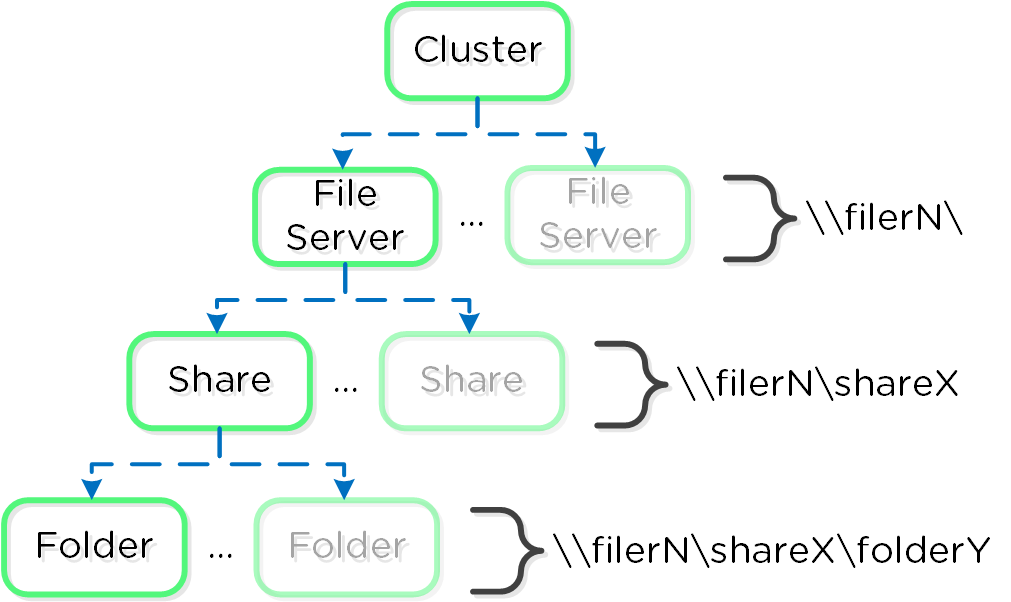 Files Mapping
Files Mapping
The Nutanix Files feature follows the same methodology for distribution as the Nutanix platform to ensure availability and scale. A minimum of 3 FSVMs will be deployed as part of the File Server deployment.
The figure shows a detailed view of the components:
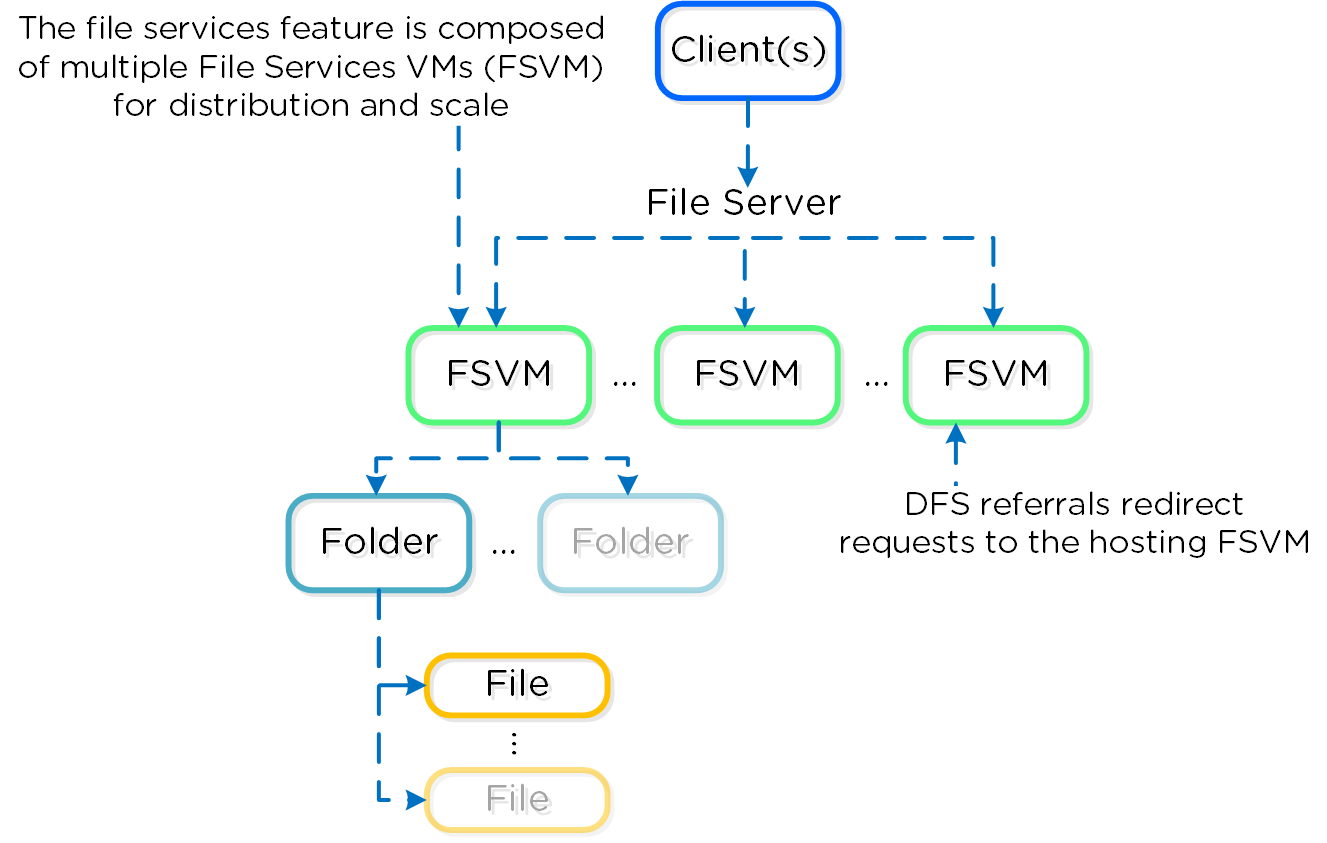 Files Detail
Files Detail
The FSVMs are combined into a logical file server instance sometimes referred to as a Files cluster. You can create multiple Files clusters within a single Nutanix cluster. The FSVMs are transparently deployed as part of the configuration process.
The figure shows a detailed view of FSVMs on the AOS platform:
 FSVM Deployment Arch
FSVM Deployment Arch
The Nutanix Files feature is fully integrated into Microsoft Active Directory (AD) and DNS. This allows all of the secure and established authentication and authorization capabilities of AD to be leveraged. All share permissions, user and group management is done using the traditional Windows MMC for file management.
As part of the installation process the following AD / DNS objects will be created:
A user account with the domain admin or equivalent privileges must be used to deploy the File Service feature as AD and DNS objects are created.
Each FSVM leverages the Volumes API for its data storage which is accessed via in-guest iSCSI. This allows any FSVM to connect to any iSCSI target in the event of a FSVM outage.
The figure shows a high-level overview of the FSVM storage:
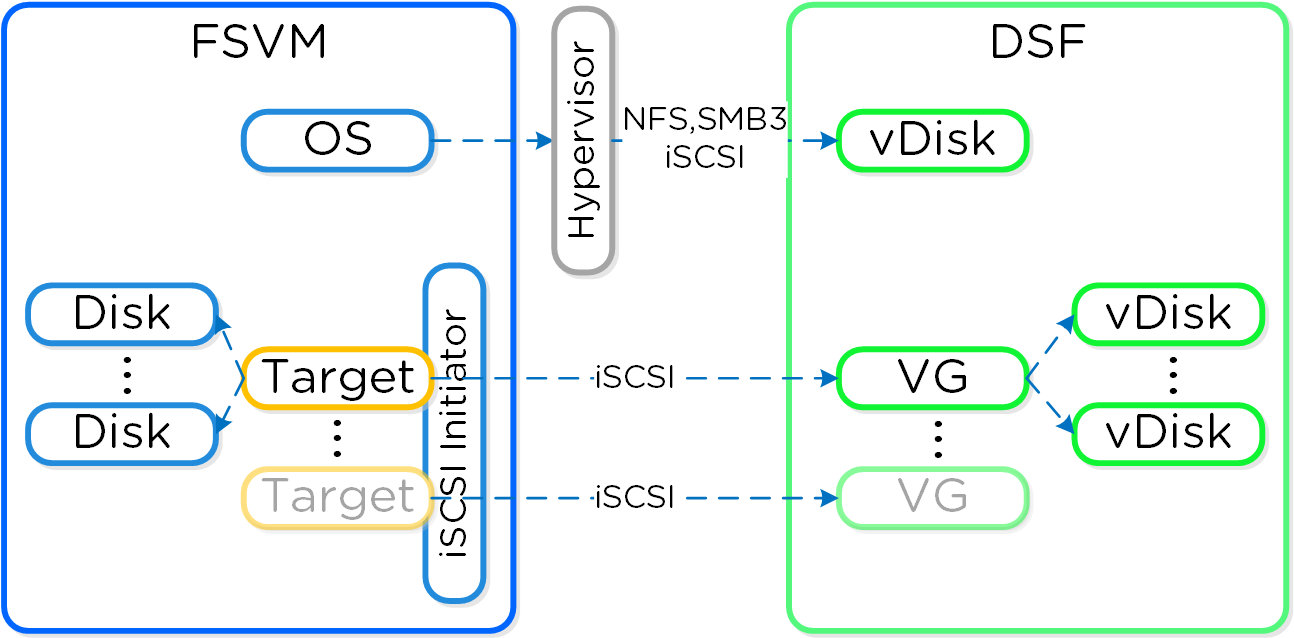 FSVM Storage
FSVM Storage
In the event a CVM becomes unavailable (e.g. active path down), iSCSI redirection is used to failover targets to another CVM which will then takeover IO.
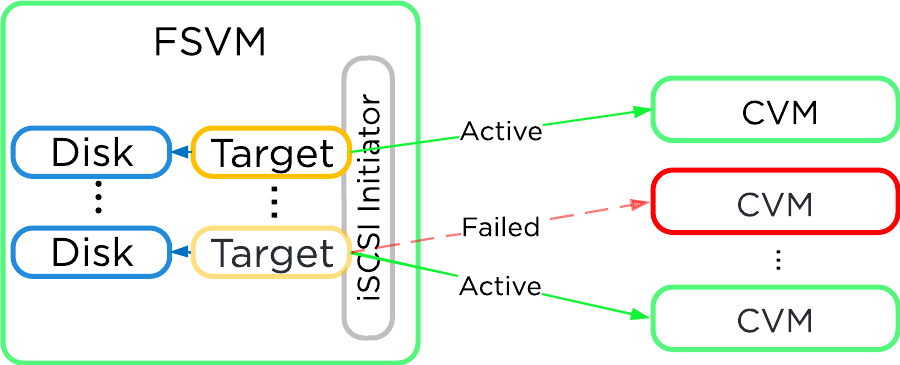 FSVM Storage Failover
FSVM Storage Failover
When the original CVM comes back and is healthy it will be marked as the active path to provide for IO.
In a normal operating environment each FSVM will be communicating with its own VGs for data storage with passive connections to the others. Each FSVM will have an IP which clients use to communicate with the FSVM as part of the DFS referral process. Clients do not need to know each individual FSVM’s IP as the DFS referral process will connect them to the correct IP hosting their shares and folder(s).
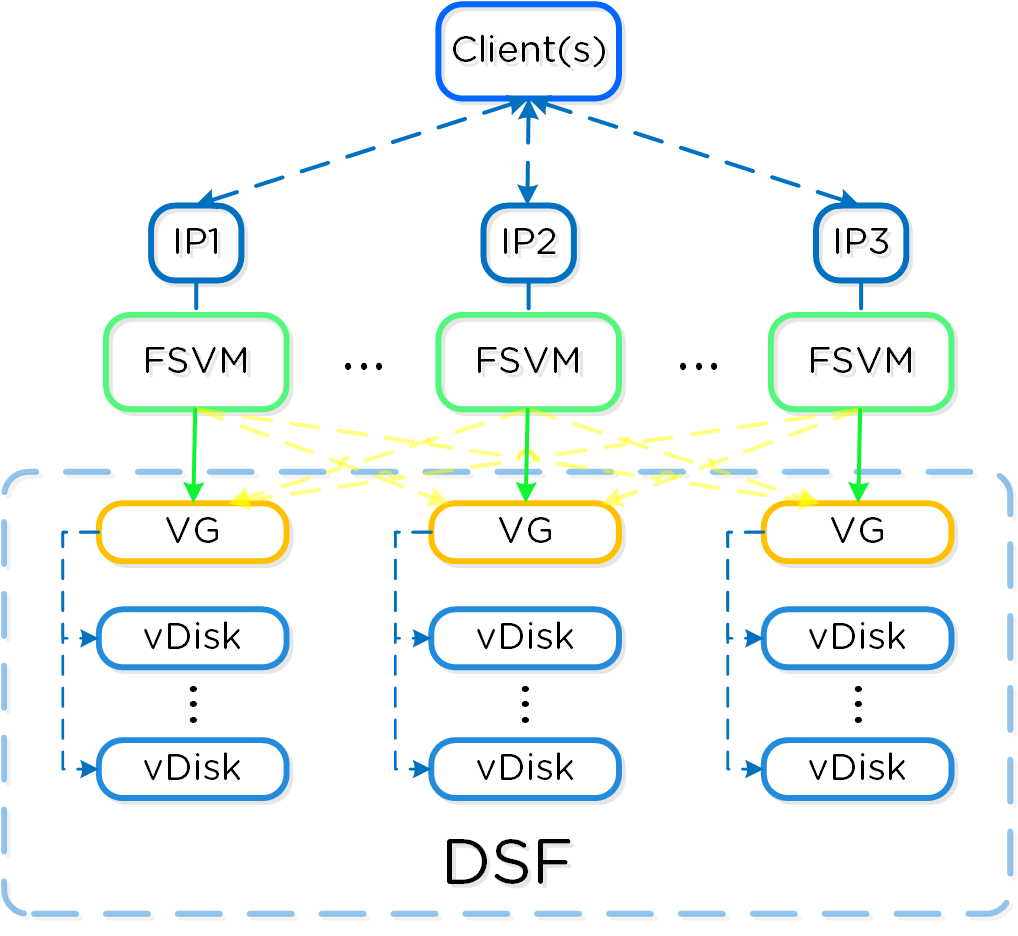 FSVM Normal Operation
FSVM Normal Operation
In the event of a FSVM “failure” (e.g. maintenance, power off, etc.) the VG and IP of the failed FSVM will be taken over by another FSVM to ensure client availability.
The figure shows the transfer of the failed FSVM’s IP and VG:
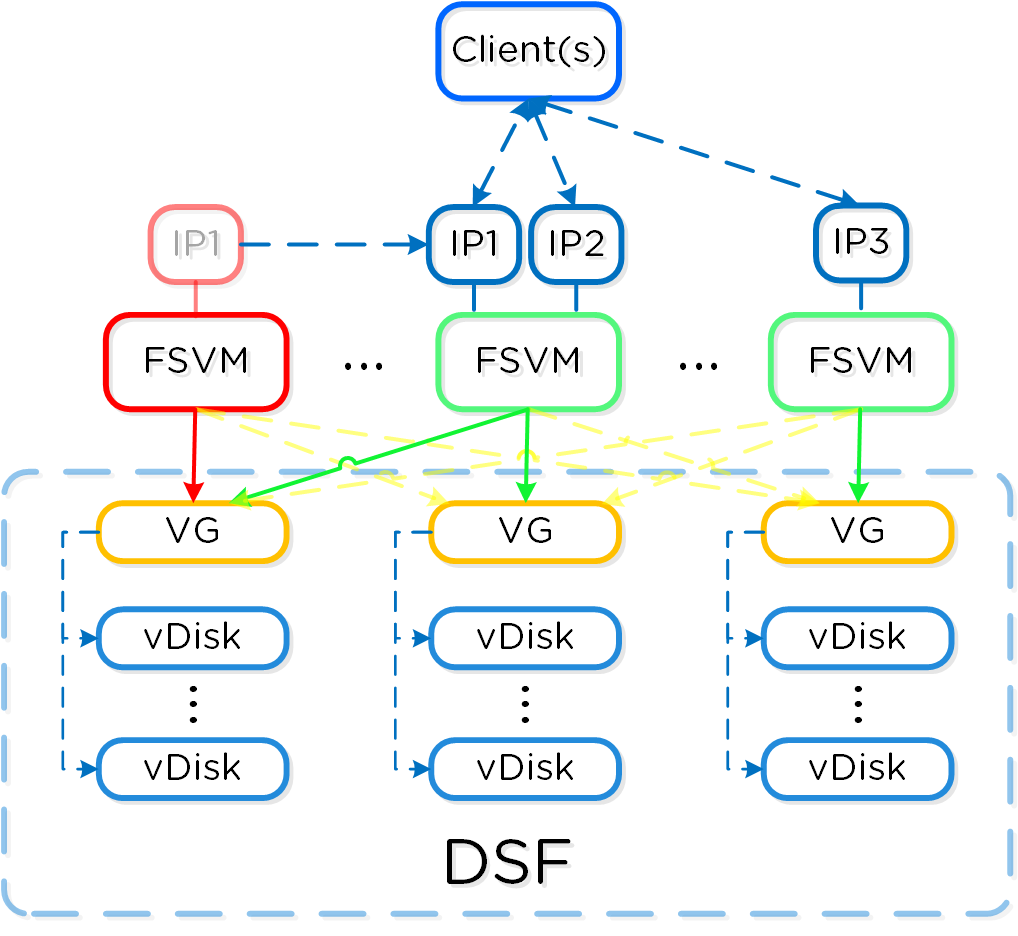 FSVM Failure Scenario
FSVM Failure Scenario
When the failed FSVM comes back and is stable, it will re-take its IP and VG and continue to serve client IO.
©2025 Nutanix, Inc. All rights reserved. Nutanix, the Nutanix logo and all Nutanix product and service names mentioned are registered trademarks or trademarks of Nutanix, Inc. in the United States and other countries. All other brand names mentioned are for identification purposes only and may be the trademarks of their respective holder(s).